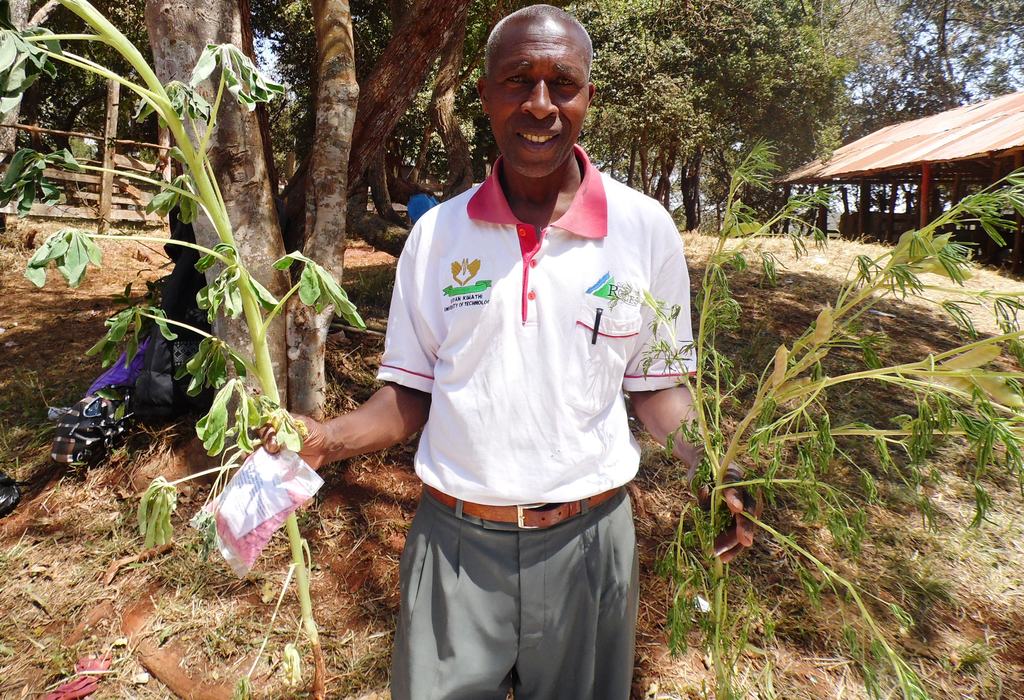Men working to lay a plastic digester for one of the GesiShamba farmers. The plastic digester allow for resizing to fit the volume of cos dung a farmer has unlike the concrete ones. PHOTO COURTESY OF GESISHAMBA.
Farmers, who rely on biogas as the source of energy for their homes can install adjustable plastic digesters, which are also movable unlike the common permanent ones.
Current stone or concretes digesters are permanent and if a farmer cannot raise the required dung volume due to change in livestock size, the set up becomes obsolete.
GesiShamba Biogas officer Daniel Mungai said the plastic digesters allow for much flexibility to meet the farmer’s energy needs despite the number of cattle they have.
“If today you have a concrete or a stone digester that accommodates dung from seven cattle, reducing your livestock to three renders it useless. But the plastic option allows for farmer to scale down to even two cows and continue enjoying the energy supply,” he said.
Similarly, it is an option for urban farmers who do not have permanent residences. It is movable, therefore, if farmers stop being tenants at one place, they can shift with it, Mungai said.
READ ALSO: Two cows' dung saves farmer thousands of shillings in cooking gas
One may also want to relocate the biodigester within the farm. It is easy to do so.
It is easy to repair or replace damaged parts without dismantling everything and starting a new.
GesiShamba does the adjustments from big to small or the reverse at a cost-depending on the size.
READ ALSO: Borstal boys beat climate change with biogas digesters
To install a four-metre-cubic digester for two cows, it costs Sh80,000. The digester can handle 30kg of cow dung.
The biggest digester for five to seven cows costs about Sh130,000. The price includes labour and all accessories such as pipes and burners.
Monthly installments are also allowed, with options of paying from five months to two years.
READ ALSO: Dairy farmers conserve environment with biogas digesters
Mungai can be reached on +254714979842
GesiShamba technical co-coordinator can also be reached on +254723114472.
Write comment (0 Comments)

















